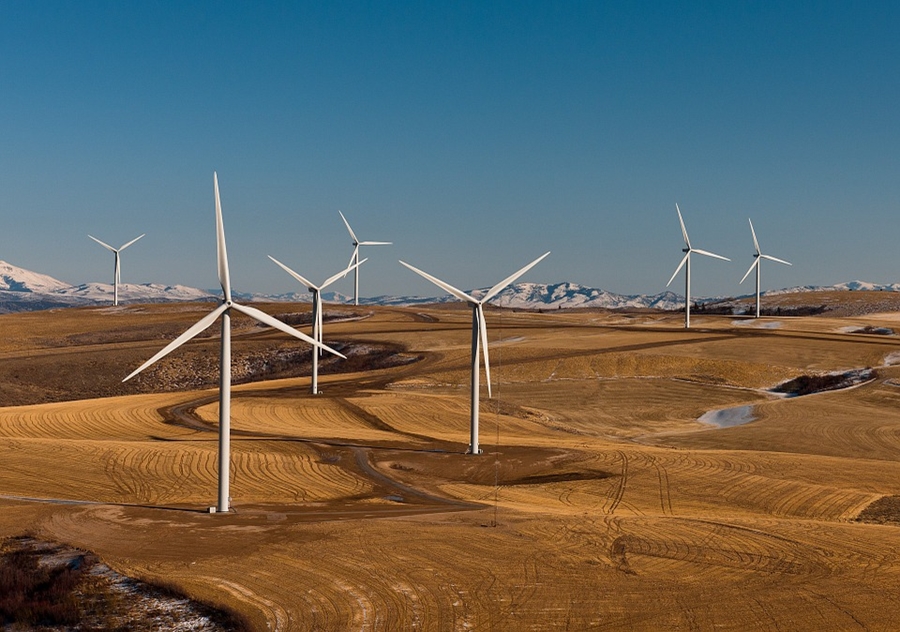Study Demonstrates a Better way to Store Renewable Energy
FAYETTEVILLE, Ark. – In an effort to find better ways to store renewable energy, physicists at the University of Arkansas, in collaboration with a scientist at the Luxembourg Institute of Science and Technology, have shown that antiferroelectrics can provide high energy density. The findings may lead to storage devices that improve the efficiency of wind and solar power.
Because the production of renewable electricity may fluctuate from second to second, any device designed to store it must cope with constantly changing loads and still achieve high energy density relative to size. Batteries, supercapacitors and other technologies that can achieve high densities typically cannot react quickly enough to changing conditions. Traditional electrostatic capacitors can react quickly, but can’t hold enough energy for large-scale use.
U of A researchers Bin Xu, a research associate in the Department of Physics, and Laurent Bellaiche, Distinguished Professor of physics, along with Jorge Íñiguez at LIST, showed that antiferroelectrics may be able to achieve both goals. They published their findings in May in the journal Nature Communications.
Antiferroelectrics are materials in which adjacent dipoles – positive and negative charge centers separated by a very small space – are ordered in opposite direction of one another. Ferroelectric materials, by contrast, have adjacent dipoles ordered in the same direction.
Antiferroelectrics become ferroelectric with the application of a high enough electric field. By exploiting this characteristic, researchers predicted that high energy density and efficiency can be achieved in antiferroelectrics, in particular with the rare-earth substituted bismuth ferrite material used in this study. The paper explored improving the storage performance with further manipulation of the electric field. They were also able to create a model that explains the connection between energy density and the electric field, which points toward further research in the future.
Contacts
Bin Xu, research associate
Department of Physics
479-575-2506,
binxu@uark.edu
Headlines
Four Students Named Goldwater Scholars; Two Earn Udall Honorable Mentions
Four U of A students have received the prestigious Goldwater Scholarship, an award for top students in mathematics, science, and engineering.
Cross-Campus Collaboration Culminates in New Outdoor Geological Installation
Grand opening event to celebrate the new GeoLab installation at the U of A’s Gearhart Hall courtyard is set for May 3. The installation will be open to the public year-round.
First Students to Use Online Degree to Hone Nursing Leadership, Elevate Patient Care
Hanna Baxendale and Wendi Kimbrell will begin coursework in the Doctor of Nursing Practice-Executive Master of Business Administration program offered by the Eleanor Mann School of Nursing and Walton College.
Join the Office for Sustainability on a Final Cruise to Campus
Cruise to Campus Wednesdays have fostered a gathering space for individuals interested in biking to campus. Drop by the Old Main Lawn from 7:30-10 a.m. Wednesday for coffee, something to eat and conversation.
Fay Jones School Student Ambassador Program Gives Voice to Design Students
The student ambassador program at the Fay Jones School of Architecture and Design is built to connect top design students with their school, its alumni, its future students and others inside and outside the school.





